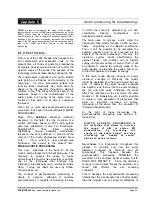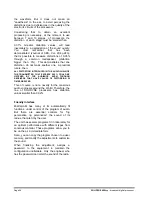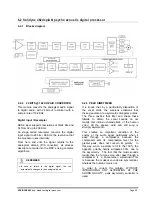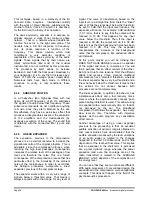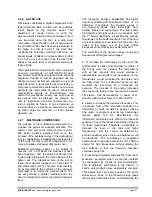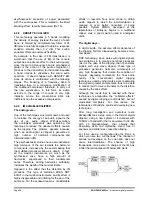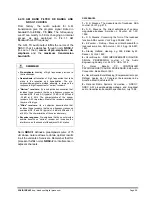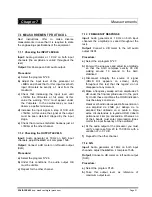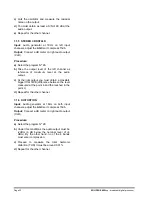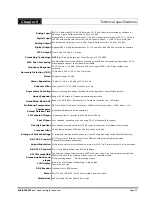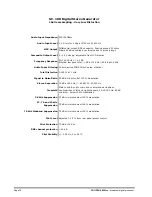
SOLIDYNE 462
dsp - broadcast digital processor
Page 29
6.2.10 AM BAND FILTER DE BANDA AND
NRSC-1 CURVES
From factory, the audio outputs for A.M.
transmission give the program signal limited in
bandwidth to
40 Hz
-
7.5 KHz
. The hi-frequency
cut-off can modify to 5 KHz changing an internal
jumper, as was explained in “2.4.1.1 AM
Bandwidth cut-off frequency”.
The A.M. TX audio output fulfills the norms of the
NRSC; that it establishes through norm
NRSC-1
(to see ref. the 9)
curves of pre-emphasis / de-
emphasis
and the
maximum transmission
bandwidth
.
REMEMBER
•
Pre-emphasis:
boosting of high frequencies previous to
the transmission.
•
De-emphasis:
attenuation of high frequencies that take
place in the reception and demodulation. The pre-
emphasis/de-emphasis method attempts to improve the
response to high frequencies for “narrow” receivers.
•
“Narrow” receivers:
it’s a subjective denomination that
includes those receivers that have a frequency response
combined (RF, IF and AF) typical of -10 dB to 4.2 KHz and
-20 dB at 6 KHz. The characteristics of the narrow
receivers A.M. vary widely. Most of the receivers available
they are of this type.
•
“Wide” receivers:
it’s a subjective denomination that
includes those receivers that have a frequency response
combined (RF, IF and AF) typical of -6 dB at 6 KHz and -10
at 8 KHz. The characteristics of these receivers vary.
•
Excesive response:
Pre-emphasis that does not provide
audible benefits on “narrow” receiver but increases the
interference on the channel of the adjacent A.M. station.
Norm
NRSC-1
defines a preemphasis curve of 75
uS whose nature allows to obtain optimal results
in all the variants of receivers. Remember that this
processor fulfills norms
NRSC-2
on interference in
adjacent channels.
REFERENCES
1.-
S. S. Stevens, The measurement of loudness, ASA
Journal, Vol.27, pg. 815.
2.-
S. S. Stevens, The direct estimations of sensory
magnitudes-loudness; American J. Psychol. 69, 1-25,
1956.
3.-
S. S. Stevens, Concerning the form of the loudness
function; ASA Journal, Vol. 29, pg 603-606, 1957.
4.-
E. Zwicker – Flottrop – Stevens; critical bandwidth in
loudness sumation, ASA Journal, Vol. 29, pg. 548-557,
1957.
5.-
Stanley Gelfand, Hearing, pg. 392, Edited by M.
Dekker, N. York, 1990.
6.-
Oscar Bonello
.
NEW IMPROVEMENTS IN AUDIO
SIGNAL PROCESSING Journal of the Audio
Engineering Society, Vol. 24 Nº 5. USA, 1976
7.-
Oscar Bonello PC CONTROLLED
PSYCHOACOUSTIC AUDIO PROCESSOR, 94th Audio
Convention, Berlin March 1993
8.-
Oscar Bonello Burst Masking (Enmascaramiento por
Ráfaga) Anales del II Congreso Iberoamericano de
Acústica, Madrid, octubre 2000
9.-
National Radio Systems Committee – NRSC-1:
NRSC AM preemphasis/deemphasis and broadcast
audio transmission bandwidth specification, July 1998.









